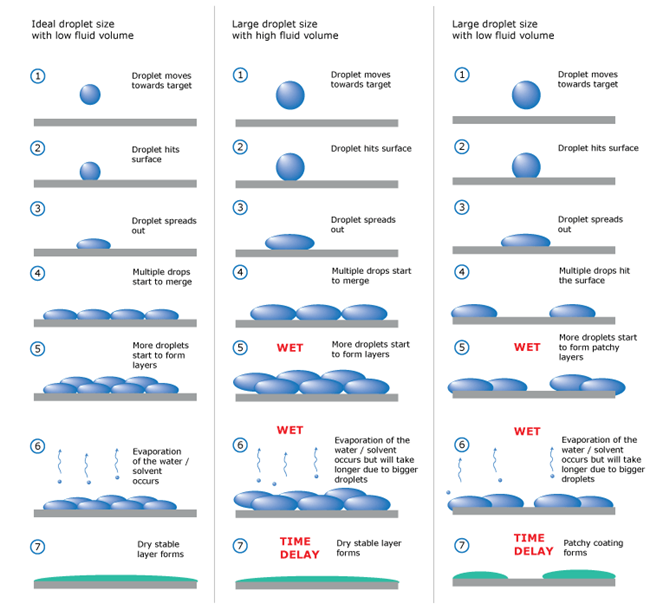Wetting in sanitising sprays
Over-wetting can be an issue in many sanitising situations. If the area being treated contains electrical equipment, then over-wetting may cause damage to the said equipment. Alternatively, a damp surface may present a slip hazard or be undesirable for other reasons. Wet surfaces will dry out eventually, but the speed of evaporation will depend very much on environmental conditions and the level of wetting.
Whilst over-wetting may be problematic, under-wetting will mean a surface has not been treated. The contact time to effectively kill pathogen varies greatly from pathogen to pathogen but the World Health Organisation recommends 10 minutes of contact time for killing viruses and longer for some hard-to-kill bacteria. This being the case, it is clear that under-wetting that will evaporate before this time will be sub-optimal.
As with many things a balance is required between under and over-wetting. It should be noted that wet does not necessarily mean wet to the touch. A micro-coating of disinfectant may not actually even feel wet or present an electrical hazard. These micro-coatings may well be present long enough for a good pathogen kill rate. So, it would be an error to assume that everything must feel wet to the touch in order to ensure good disinfection.

Sprays
For surfaces that can tolerate wetting, but need to dry quickly a fine mist of spray in the 40-100 micron range will be ideal. This will ensure good coverage due to the small droplet size and will give a good contact time. If the level of spraying is controlled carefully and it is distributed well over an area then drying can occur naturally in a matter of minutes. The surface can be dry to the touch quickly, ensuring slip hazards or other undesirable outcomes of damp surfaces are avoided. If very fine sprays are not achievable then a secondary action like wiping or assisted air drying may be required to evaporate the larger droplet and/or to help cover patches of the surface that did not come into contact with the spray.